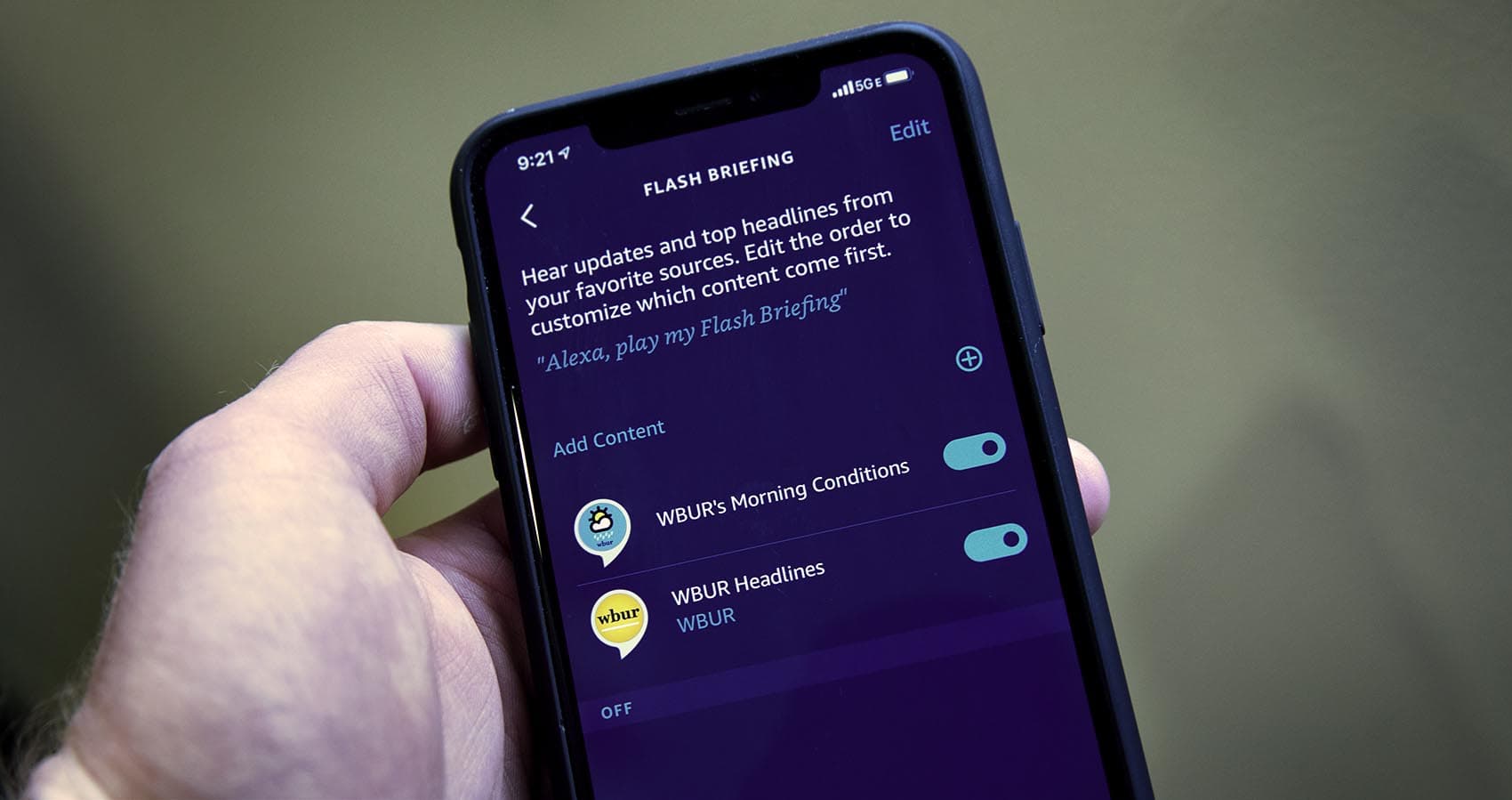Advertisement
Alexa Flash Briefings Hold Promise For News — But They Need To Work Better For Everyone

"Flash briefings" are a relatively simple way to build a customized newscast for your Alexa-enabled device. As such, they hold tremendous potential for audio news.
But they are still very much a work in progress.
The Good
- Total control. Flash briefings give the user full authority to customize the content they hear — from specific news providers, all the way down to the order in which it's delivered. This stands in sharp contrast to an experience like NPR One or Google's Your News Update, where an unseen algorithm does much of the choosing for you.
- Something for everyone. There are close to 1,000 flash briefings available. Almost anyone should be able to construct a daily newscast that suits their needs.
- Low-friction. Once configured, the flash briefing is invoked with a simple voice command; tracks can be skipped and repeated in a similar fashion. Thus, the flash briefing provides a personalized, hands-free — yet still informative — experience for those who'd prefer not to pore over a smartphone to get the news.
The Bad
- Half-hearted marketing. One of the first Google hits for "flash briefing" is this spartan instructions page. A top hit for video is this cursory piece from Amazon. Amazon does even less to promote specific briefings. Discovery is mostly done by word of mouth, trial and error or guesswork ("I wonder if CNN has a flash briefing ...").
- Total control. Flash briefings are great for picky, tech-savvy news junkies who want to take the time to curate a morning news routine. But it could be daunting — or simply too much work — for more casual listeners who prefer the simplicity of live radio, a podcast like "The Daily" or NPR One.
- Paralyzed by choice. To reiterate, there are nearly 1,000 flash briefings to choose from. Where does one even start? Due to Amazon's lenient approval process (pre-pandemic, at least — more on that below), there is a good deal of repetition and overlap; and there seems to be far more noise than signal.
- Can't try before you buy. To make matters worse, there isn't really an Amazon flash briefing directory, just a subsection of Amazon.com. More glaringly, there is no way to listen to a sample of the audio. You just have to subscribe and cross your fingers.
- Audio quality. Even content from solid news sources can vary in loudness, especially when compared to adjacent flash briefings. This can lead to users constantly adjusting the volume — ruining the smart-speaker promise of uninterrupted, hassle-free listening.
- The lag time. News providers — like public radio stations — often just use their hourly newscasts as a flash briefing. And most newspapers have, at best, a daily newscast. This means users could be listening to news that's a few hours — or a day! — old. Imagine, just as you get home, hearing on your smart speaker about an active shooter in your neighborhood — only to discover later on that they were apprehended hours earlier. (This of course is a huge advantage that live radio has over on-demand audio.)
A Way Forward
- Change the name! "Flash briefing" just isn't going to resonate with the average consumer. It's neither evocative nor self-explanatory. Pick almost any term, and it will sound better: news briefings, news briefs, news snacks, audio snacks, soundbites, audio takes, news snippets, etc.
- Increased app visibility. Many users must rely on the Alexa mobile app to configure their devices. But flash briefings are absolutely buried in this interface. The app home screen could be used to push personalized, localized, high-quality flash briefings. The same could be done via smart screens like the Echo Show.
- Real promotion. Amazon should use its immense marketing budget to promote flash briefings. They should create friendlier and more useful documentation and videos on how to use and find them.
- A better directory. A dedicated, clean and well-organized directory (divorced from from the Amazon.com storefront) could significantly improve adoption rates.
- Tiered offerings. This new directory could give preferential treatment to the signal, and dampen all the noise. An actual human being — no algorithms, please — could curate "Best Of," "Must Hear" and "Your Local News" lists (just like the Apple Podcasts home screen).
- Tools for publishers. Creating flash briefings is still a heavy lift, even if you're a news organization that's already producing short audio news. Amazon could provide any number of support tools: a dynamic loudness normalizer; a graphical interface to customize how your flash briefing appears on a smart-screen display; an intermediary service that converts your audio RSS into JSON that conforms to Amazon's flash briefing spec.
- Support for publishers. Our team worked to get our new coronavirus microcast into the skills store, only to receive an auto-reply email from Amazon that stated:
in an effort to ensure accuracy and consistency of information shared with our customers, we are limiting skills about COVID-19 ... As such, your skill will not be published to the catalog ... Please do not reply to this e-mail.
Why would Amazon reject an informative flash briefing from an established local news source? In the middle of a pandemic? No matter who we tried to contact, we couldn't get an answer. And only a last-ditch email to Amazon public relations helped solve the problem. There are Amazon-moderated forums, Slack channels and office hours — which are incredibly helpful for Alexa developers. But, as far as I can tell, there is no official line of communication between Amazon and publishers. Of course, this presumes that Amazon wants to develop a news delivery tool that competes with NPR One or Google's Your News Update — which is far from given. - Show me the money! Nothing motivates like cash. Amazon could easily create an incentive program to coax major (and minor) media players to improve both the quality and quantity of their flash briefings.
Amazon Responds
An Amazon spokesperson did reply to some of my questions, but with disappointingly few details.
- "Flash briefings are a great way for customers to get news, local weather, and more from their preferred news providers." I heartily agree!
- Amazon is "seeing many customers make this a part of their daily routine." If those "many" were an impressive percentage of the overall users, I assume we'd see that actual number.
- "We've added onboarding and education information for new Alexa customers as part of the set-up flow." This is great, though it doesn't help pre-existing users.
- "We've also made it easy for developers to share their news content with Alexa customers using the Flash Briefing API ... We'll continue to listen to developers and customers to further develop and enhance the Flash Briefing experience." This too is great. Though notice who's absent from the conversation? That's right — the publishers.
